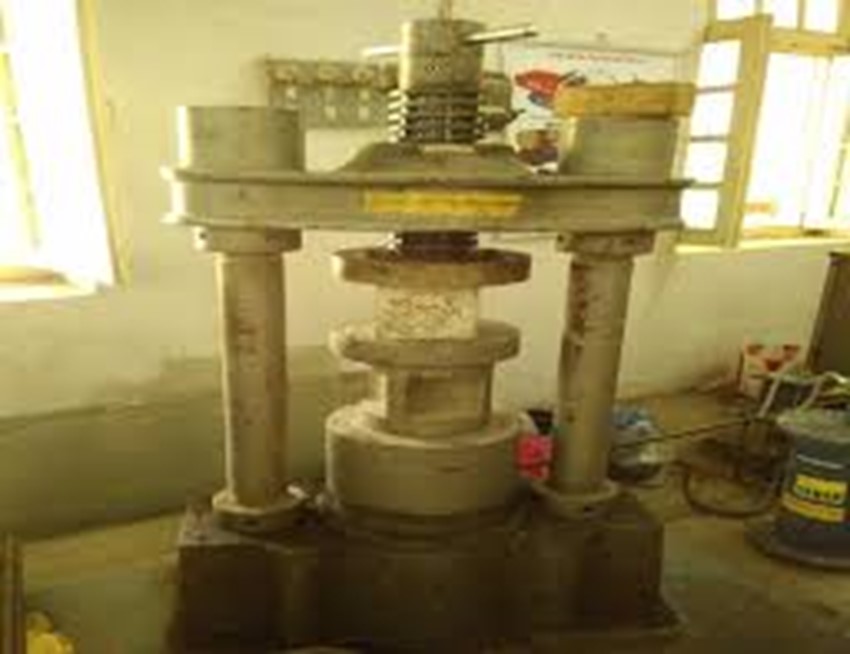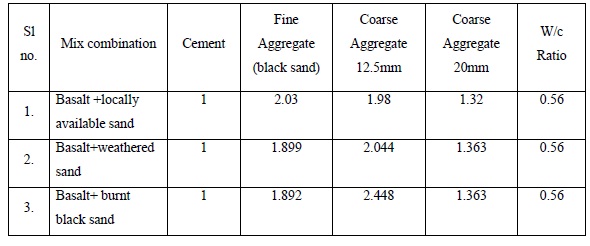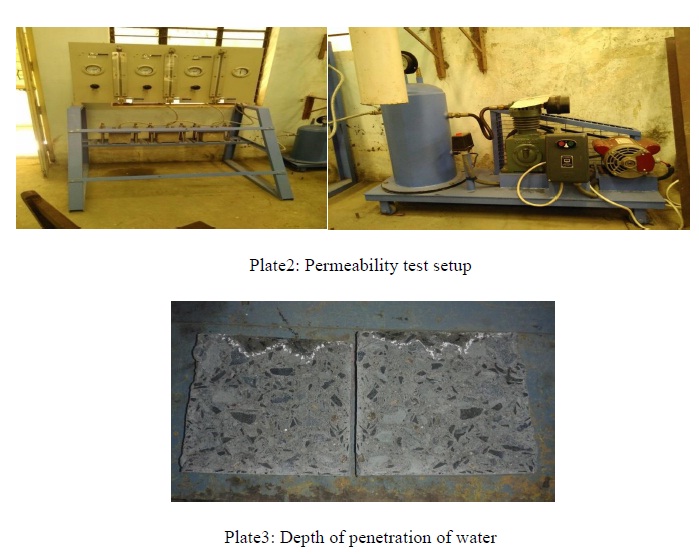durability study of concrete using foundry waste sand
| 1662 Views | 1 Likes | 0 Comments | { follow blog } |
Pathariya Saraswati C, Ranajay krushnaK studied the compressive strength of the concrete by replacement of the local sand by foundry waste sand by 0%, 20%, 40% and 60% and they found that for 60% replacement of local sand by waste foundry sand they had obtained maximum compressive strength values.

Posted By OLUSOLA MICHAEL ROTIMI { follow user } 3 years ago 11/24/2020 11:50:02 PM in Civil { follow category }

In India nowadays metal casting industries dump lot of foundry sand as a waste, which is creating dangerous environmental related problems, on the other hand we are facing a problem of sand scarcity in construction. With the aim of resolving these two problems, we have attempted an effective strength and durability performance study on concrete with 100% replacement of foundry sand.
Rafat Siddique, Ravinder Kaur Sindhu, carried out the test for studying the resistance of the concrete for the sulphate attack and they had observed that for the mix containing 10% FWS an increase in strength as compared to the control mix even after immersing the cubes in magnesium sulphate solution. However, for both 15% and 20% replacement levels, a decrease in strength is observed when compared to the standard 28 days strength of the related concrete mix, at all ages after immersion in the sulphate solution.
Alok Khanduri under the guidance of Rafat Siddique studied the effect of foundry sand on porosity and Resulted that Porosity of the mortar decreases with increase in sand replacements with different replacement levels of foundry sand. The mortar with FWS than 10% exhibited reductions in water absorption and voids ratio.
G.GaneshPrabhu, Jin Wook Bang, Byung Jae Lee, Jung Hwan Hyun,Yun Yong Kim studied the reuse of Foundry sand as a substitute for natural sand in concrete production was evaluated based on the mechanical and durability properties of the resulting concrete. Based on the extensive tests carried out on the six mixtures, the following conclusion has been made. The chemical analysis of Foundry sand indicated that Foundry sand can be a very suitable material for concrete production. However, the fineness and high water absorption of FWS increases the water demand of the concrete by water absorption, decreasing the workability of the concrete, although the effect was profound beyond the substitution rate of 30%.
From the above discussion it is clear that many of the researchers have determined strength parameters at different replacement levels of foundry waste sand. Durability study is very scanty in the available literature. Keeping this point in mind following objectives has been defined below.
Objectives:
1. Determination of compressive strength of concrete for 28days curing period and 56days (i.e., 28days for curing and other 28 days exposed to atmosphere).
2. Effect of accelerated curing on compressive strength (440C, 550C).
3. Determination of porosity and water absorption.
4. Permeability test.
5. Determination of strength after heating and cooling.
6. Determination of strength after alternate wetting and drying.
7. Acid attack test (sulphate attack test).
Materials which are used to conduct the above tests are Cement (OPC), Locally available sand, Foundry waste sand, Basalt Aggregates and Water
CASTING:
Cube specimen of size 15cm×15cm×15cm were cast using the mix proportion given in Table1 as per IS:516-1959[10].
Table1: Finalized mix proportions for locally available sand, Weathered and Burnt Black sand for M20 grade concrete.

CURING:
The cubes were de-moulded after 24 hours of casting. The cubes were kept for curing under water immersion at laboratory temperature 27±2˚C. Water is being changed at regular intervals.
1. Compressive strength test:
The compressive strength test was carried out using IS: 516-1979. At the end of curing period i.e., 28 days and at 56 days (exposed to environment for a period of 28 days after 28 days curing period), compressive strength test was conducted.
2. Accelerated curing method (warm water method):
As per IS 9013-1978 the specimens after casting were kept for drying for a period of 2 and ½ hours and then sealed, after sealing they are kept in accelerated curing tank at a temperature of 550C for a period of 20± ½ hours, after this period they are taken out and wiped and later checked for its compressive strength.
The same procedure is repeated for 440C (Prevailing temperature in our city).

3. Water absorption test:
The test was carried out as per ASTM C-640.
% water absorption=[(ww-Dw)/Dw]x100
Where, Ww=wet weight of the cube,
Dw=dry weight of the cube.
4. Porosity
The specimens are cast according to the mix design and cured for 28 days in curing tank. Then it is removed from the curing tank and surface is wiped, then the weight is noted down. Then the samples were oven dried for 24 hours at 65°C temperature and weighed again. Again it is kept in oven for next 24 hours and again the weight is noted down. This process is continued till the weight remains constant. The difference in the weight of the sample gives the porosity.
5. Permeability Test:
The test was carried out according to German Standard DIN 1048 on concrete specimens of size 150x150x150 mm ,and the depth of penetration in specimen is noted down by breaking them equally under UTM.

6. Alternate heating and cooling:
The specimens are cast and cured for 28 days, after curing the specimens are subjected to heating and cooling for a period of 20days (20cycles) to check the durability. The specimens are heated at normal atmospheric temperature in day time and cooled during the night time. This process is continued for 20 days and after that strength of the specimens is checked.
7. Alternate wetting and drying:
The specimens are cast and cured for 28 days, after curing the specimens are subjected to alternate wetting and drying for a period of 20 days to check the durability. The specimens are kept for wetting in curing tank for 1 day and next day it is allowed to dry, again the procedure is repeated, after 20 days cycle the strength of specimens are tested to check the effect of alternate heating and cooling on concrete.
8. Acid attack test:
Sulphate attack test was carried out as per Leonardo journal of science ISSN 1583-0233. Magnesium sulphate solution of 50g/l is used to evaluate sulphate resistance of concrete.
Conclusion:
1. From the result of sieve analysis of burnt black sand and weathered sand, both sand belongs to ZoneIII and locally available sand belongs to ZoneII. Foundry waste sand has lower specific gravity compared to locally available sand.
2. Water absorption of weathered sand is more as compared to burnt black sand and locally available sand hence workability is reduced.
Source and Credit: POOJYA DODDAPPA APPA COLLEGE OF ENGINEERING,KALABURGI
Comments
*No comment found!